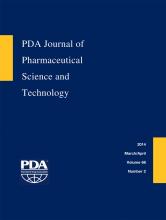Abstract
This article has been written as a contribution to the industry's efforts in migrating from a document-driven to a data-driven compliance mindset. A combination of target product profile, control engineering, and general sum principle techniques is presented as the basis of a simple but scalable lifecycle compliance model in support of modernized process validation. Unit operations and significant variables occupy pole position within the model, documentation requirements being treated as a derivative or consequence of the modeling process. The quality system is repositioned as a subordinate of system quality, this being defined as the integral of related “system qualities”. The article represents a structured interpretation of the U.S. Food and Drug Administration's 2011 Guidance for Industry on Process Validation and is based on the author's educational background and his manufacturing/consulting experience in the validation field.
LAY ABSTRACT: The U.S. Food and Drug Administration's Guidance for Industry on Process Validation (2011) provides a wide-ranging and rigorous outline of compliant drug manufacturing requirements relative to its 20th century predecessor (1987). Its declared focus is patient safety, and it identifies three inter-related (and obvious) stages of the compliance lifecycle. Firstly, processes must be designed, both from a technical and quality perspective. Secondly, processes must be qualified, providing evidence that the manufacturing facility is fully “roadworthy” and fit for its intended purpose. Thirdly, processes must be verified, meaning that commercial batches must be monitored to ensure that processes remain in a state of control throughout their lifetime.
- Process validation
- Process design
- Process qualification
- Continued process verification
- Unit operations
- Significant variables
- © PDA, Inc. 2014
PDA members receive access to all articles published in the current year and previous volume year. Institutional subscribers received access to all content. Log in below to receive access to this article if you are either of these.
If you are neither or you are a PDA member trying to access an article outside of your membership license, then you must purchase access to this article (below). If you do not have a username or password for JPST, you will be required to create an account prior to purchasing.
Full issue PDFs are for PDA members only.
Note to pda.org users
The PDA and PDA bookstore websites (www.pda.org and www.pda.org/bookstore) are separate websites from the PDA JPST website. When you first join PDA, your initial UserID and Password are sent to HighWirePress to create your PDA JPST account. Subsequent UserrID and Password changes required at the PDA websites will not pass on to PDA JPST and vice versa. If you forget your PDA JPST UserID and/or Password, you can request help to retrieve UserID and reset Password below.






